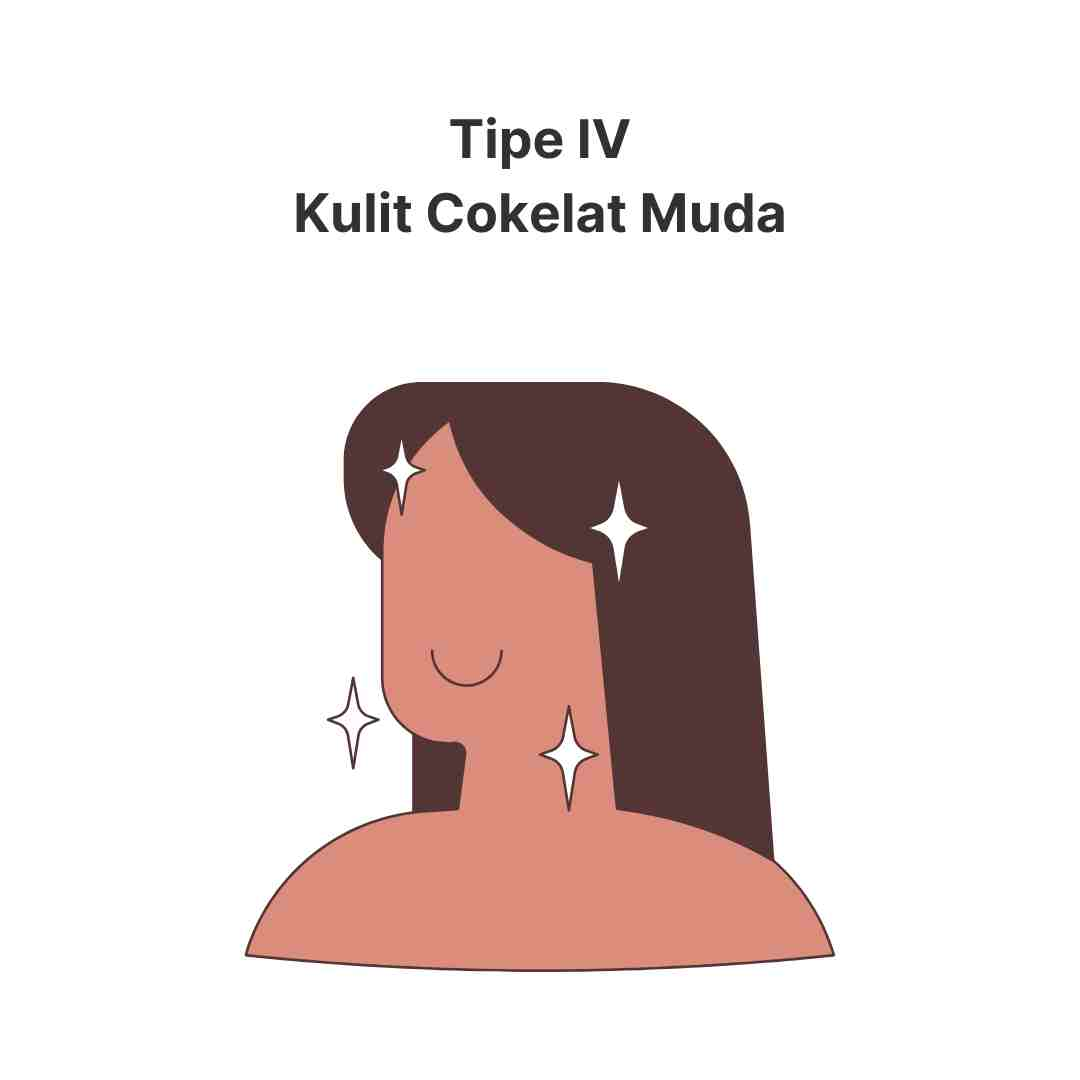First Time Naysila Mirdad Colors Her Hair, Nana Mirdad is Really Excited
Naysila Mirdad's new hair has made her sister, Nana Mirdad, really excited!

Kapanlagi.com - Human skin color is one of the most striking and interesting aspects of diversity to observe. Each variation in skin color arises as a result of adaptation to different levels of ultraviolet (UV) radiation exposure in various parts of the world. Understanding this diversity is not only important from a scientific perspective but can also enhance our awareness of the importance of proper skin care.
Our skin pigmentation is primarily determined by the amount of melanin produced by melanocyte cells. In addition to melanin, other pigments such as carotenoids and hemoglobin also contribute to the distinctive hues of the skin. In this article, we will discuss the six main types of skin colors identified based on the Fitzpatrick Scale, a system commonly used in the dermatology field to classify skin colors. Here are the details of these types as reported from several sources on Tuesday (29/10).

Type 1 Fitzpatrick Scale (Credit: Canva/imagineHarry from Trendify)
Characteristics and Origins of Type I Skin
Type I skin has a unique charm, characterized by a very pale color and often adorned with cute spots, commonly known as freckles. This skin type is generally found in those with red or light blonde hair, who come from Northern and Eastern European ancestry. However, behind this beauty, this skin is very sensitive to sunlight, easily burns, and rarely tans.
Care Tips for Type I Skin
For those with type I skin, proper care is key to maintaining skin health. Always use sunscreen with a high SPF (50+) when engaging in outdoor activities, especially between 10 AM and 4 PM, to protect the skin from harmful sun exposure. Additionally, do not forget the importance of regular skin checks to detect early the higher risk of skin cancer associated with this type. With these simple steps, your skin's beauty can be preserved!

Type 2 Fitzpatrick Scale (Credit: Canva/imagineHarry from Trendify)
Type II skin, although having a light tone, shows more resilience compared to type I. After being exposed to sunlight, this skin tends to transform into a slight tan, providing a naturally warm hue. Typically, this skin type is found in those with blonde or light brown hair, with a background of Central and Southern European descent, adding to its distinctive charm.
To maintain the health of type II skin, it is very important to use sunscreen with a minimum SPF of 30, especially when engaging in outdoor activities. Additionally, do not forget extra protection such as clothing and hats to shield against direct sunlight. Always be vigilant about changes in moles or spots on the skin, as attention to these details can help prevent unwanted health risks.

Type 3 Fitzpatrick Scale (Credit: Canva/imagineHarry from Trendify)
Type III is a skin type that has a medium or beige color, and although the risk of sunburn is lower compared to types I and II, protection is still necessary. This type is generally found in individuals of Mediterranean, East Asian, or Middle Eastern descent, who often have charming brown hair.
To maintain the health of type III skin, using sunscreen with an SPF of at least 15-30 is highly recommended. Avoid excessive sun exposure and keep the skin hydrated by using a lightweight moisturizer. With proper care, you can maintain the moisture balance of your skin and protect it from the harmful effects of the sun.

Type 4 Fitzpatrick Scale (Credit: Canva/imagineHarry from Trendify)
Type IV skin, which typically has a light brown or olive hue, is one of the special skin types. With a rare ability to withstand sun exposure, this skin often appears stunning with dark brown or black hair that enhances its allure. This skin type is commonly found among those from Southern Mediterranean, Middle Eastern, and South Asian regions, creating a beauty rich in cultural heritage.
For owners of type IV skin, maintaining skin health is important. It is recommended to always use sunscreen with a minimum SPF of 15 to avoid unwanted hyperpigmentation. Additionally, choose lightweight and non-comedogenic skincare products to keep the skin glowing and hydrated. With the right care, the natural beauty of this skin can continue to shine and captivate.

Type 5 Fitzpatrick Scale (Credit: Canva/imagineHarry from Trendify)
**Characteristics and Origins** Skin type V radiates a mesmerizing dark brown beauty, while type VI showcases an elegant dark hue, which can even be described as jet black. Both skin types rarely experience sunburn and become even more alluring when exposed to sunlight. The high melanin production in these skin types is often found in individuals of African, South Indian, or Sub-Saharan African descent, making it a symbol of strength and natural beauty.
**Care Tips** Although skin types V and VI have better resistance to UV rays, the use of sunscreen remains key to maintaining skin health. This protection helps prevent issues such as unwanted hyperpigmentation and premature aging. Additionally, do not forget to use quality moisturizers to avoid dryness and keep the skin glowing. For those with type VI skin, it is important to always be vigilant for signs of keloids or hyperpigmentation to ensure the skin remains healthy and radiant.
Yes, each skin tone has different needs. For example, skin with a lighter Fitzpatrick scale often requires extra protection from the sun, while darker skin may be more prone to hyperpigmentation and needs gentle brighteners like niacinamide or vitamin C.
All skin types need sunscreen, but lighter skin with Fitzpatrick types I-II should opt for a high SPF (30-50), while types IV-VI can use a minimum SPF of 30 with a formula that does not leave a white residue for a natural look.
Yes, lighter skin types (Fitzpatrick type I-II) tend to be more susceptible to signs of premature aging, such as wrinkles and sunspots, due to having less melanin to protect against UV rays. Early aging treatments are highly recommended for this type.
Exfoliating products can be used on all skin colors, but the frequency needs to be adjusted. Darker skin should be cautious with excessive exfoliation as it can lead to irritation and hyperpigmentation. It is recommended to use gentle exfoliators or mild AHA/BHA according to skin needs.
Yes, across all scales, sensitive skin requires extra attention. Use products with gentle and hypoallergenic ingredients, avoid fragrances, and check the active ingredient content. It is highly recommended to test on a small area of skin before regular use, especially for those with skin prone to irritation.
(kpl/dvs)
Cobain For You Page (FYP) Yang kamu suka ada di sini,
lihat isinya
Naysila Mirdad's new hair has made her sister, Nana Mirdad, really excited!
Wulan Guritno and Shalom Razade recently went to the salon together to change their hair color.
Emeron Hair Care is once again holding the Emeron Squad Hangout. This activity with the theme 'Exciting Hair Stories for Your K-Pop!' presents various activities, such as talk shows, mobile salons, and sing-alongs.
Unlike before, Tasya changed her hair color along with a new shorter hairstyle.
Angga Yunanda successfully amazes with his new appearance with blonde hair in the movie 'BUDI PEKERTI'.
Nadya Hutagalung felt like she was in a photoshoot while taking pictures in her bedroom.
This is how Joana Alexandra looks younger like a teenager, especially with her red hair that looks rosy.
Here are portraits of Happy Asmara with her bangs, naturally beautiful and even compared to BLACKPINK members.
Sheila Dara Aisha immediately caught attention with her new appearance, a bright blue shaved hair.
This is Sheila Dara's attention-grabbing hairstyle with bright blue hair.
Here is Sung Joon's story about his role in the drama ISLAND at the press conference for the drama.
For those of you who are bored with ordinary hair models and colors, you can try cutting your hair short like these super cool K-Pop idols for some inspiration.